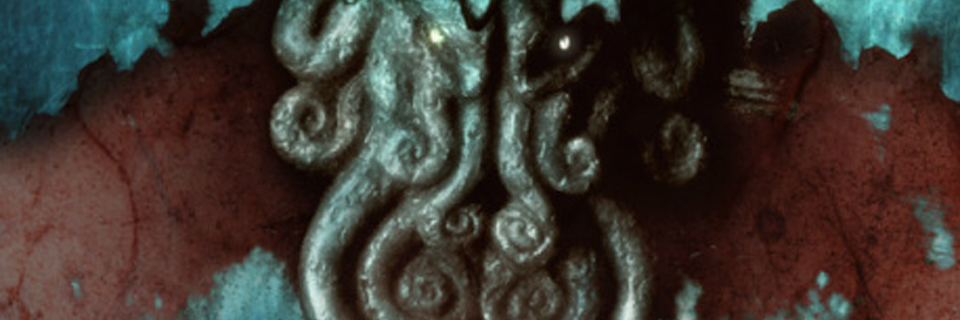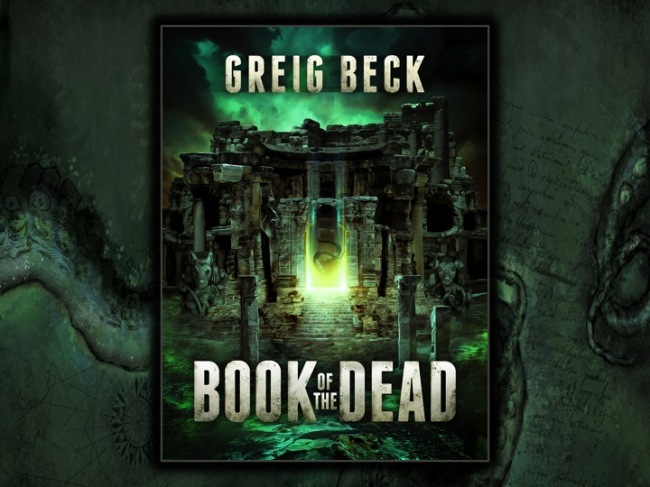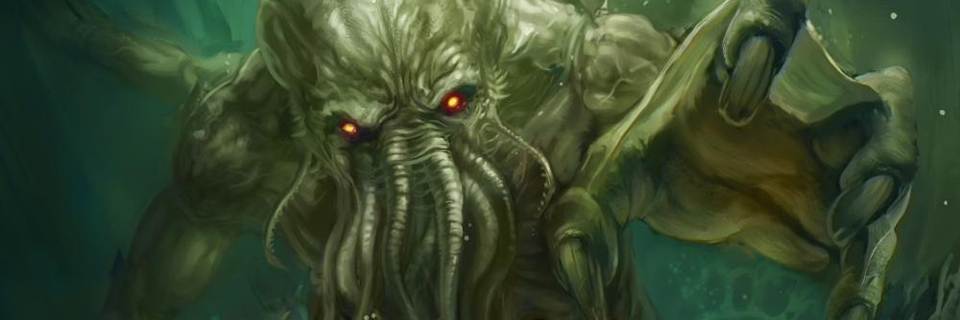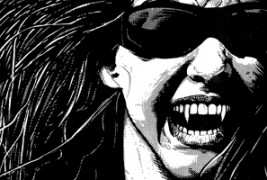
In the early 1980s, tabletop Role-Playing games were still in their infancy. D&D had come along by then, and the groundswell of popularity it was gathering unto itself was beginning to demand more than the fledgling TSR could easily provide. Perhaps we should pause here for a moment to describe what “tabletop RPG” means for those unfamiliar with gaming.
A tabletop RPG is basically an elaborate game of “let’s pretend.” One person is the referee, or Game Master (GM) who obtains an adventure scenario – either by purchasing one pre-made, or by designing one from scratch – and sets the stage, so to speak, for the other players. The players take on the roles of their characters, and dice are rolled to determine success or failure for any task out of the ordinary where failure will carry consequences. The Game Master plays the parts of all the persons and/or monsters the characters encounter, as well as describing what the characters are seeing, hearing, smelling, etc at any given time in the game.
A good GM is a rare thing: for one thing, there are many tiny details to be kept track of in each situation, which isn’t always easy. A good GM needs the ability to keep the action from bogging down in idle chit-chat, but also must be able to ‘skip to the good bits’ occasionally to keep the players on track – a certain amount of flexibility is key. The GM has to resist the urge to pass along too much information; some things the players have to figure out for themselves, but sometimes they need a hint or two to keep things rolling.
This is all done around a table; despite what Hollywood might once have had us believe, very few people dress up in costumes and run around in steam tunnels at night acting out their characters. There is a subset of gamers who do act out their characters on a deeper level than just sitting around a table and adopting a funny accent. Those persons are called LARP-ers, an acronym for Live Action Role Playing. Fully describing that type of gaming is sadly beyond the scope of this article, but might appear at a later date.
As other publishers scrambled to fill a perceived need – this could also be cynically interpreted as “rushing to grab dollars from the D&D money train” – they began to search for new genres to plunder. Space Opera came quickly to mind and Marc Miller’s Traveler RPG was born. Horror was close behind it, bringing Call of Cthulhu and Howard Phillips Lovecraft onto the gaming scene circa 1982.
In truth, horror-themed role-playing wasn’t really a new thing. Conan for example was a wildly popular, high-fantasy type of guy at the time, and his creator, Robert E. Howard, also happened to be one of the original members of the “Lovecraft Circle” and a regular correspondent of HPL’s. Conan regularly had to deal with Cthulhoid critters in the novels, so it’s easy to see that sword and sorcery-style fantasy gaming (a la D&D) and horror gaming shared more than a few chromosomes in their history, but Call of Cthulhu was the first RPG that relied strictly on horror to provide the majority of the thrills and action.
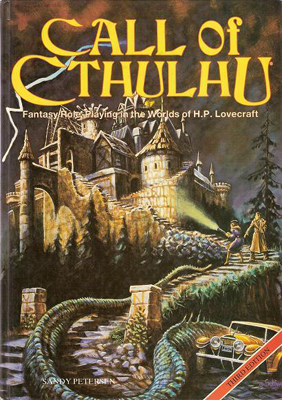
Chill, published originally by a group of ex-TSR employees under the name Pacesetter and later acquired by current board game juggernaut Mayfair Games, was similar in nature to Call of Cthulhu, but seemingly owed as much to Scooby-Doo and Kolchak: the Night Stalker as it did to Lovecraft. Parading a variety of interesting folklore monsters before fans, it achieved serviceable popularity, but fell behind during the 1990s and to this day has not recovered. Rumors regularly surface of “someone” sinking money into a nostalgia-driven plan to resurrect the fun and popular game, but so far there’s little evidence of success.
In the intervening years, horror RPGs have truly blossomed. The zombie-apocalypse genre has grown dramatically over the last decade, of course, owing much to the success of All Flesh Must Be Eaten by Eden Studios. Also key to the popularity of horror-themed RPGs was the rise of an obscure company in Atlanta – White Wolf Publishing. Their Vampire: The Masquerade RPG was groundbreaking, not only for what it was but for ways it changed the hobby. It was groundbreaking because for the first time, the players played the monsters as the primary theme of the game. It also changed the face of gaming forever in that it was one of the first RPGs that women found more accessible. Since its inception, tabletop gaming was considered the kingdom of geeky nerd-boys and crusty old wargamers, and girls Need Not Apply. Now, women were finding they enjoyed role-playing games, and their impact on the industry, both as consumers and as creators of gaming material, cannot be overestimated.
Most horror-themed board games in the 1960s and 1970s – largely produced by mass-market game companies like Hasbro and Parker Brothers – were very simple and were based on an already existing brand with film or television tie-ins — The Munsters, for example, or Dark Shadows. As Americans learned about more sophisticated, european-style boardgames in the 1980s, the market shifted to accommodate new demand. Chill: Black Morn Manor, a board game based loosely on the idea for the Chill RPG, was one of the first of this new breed of boardgames with horror as its central theme. Still one of my favorites to this day, the board in C:BMM consisted of a series of tiles, placed semi-randomly. Encounters were generated by events occurring when one or more characters entered a tile, and the goal was to discover A) what the monster was – vampire, mummy, banshee – and B) how to destroy it. Each game was different because of the random mix of tiles, but the items available would provide clues to the nature of the creature for those with more than a few sessions of this game under their belt.
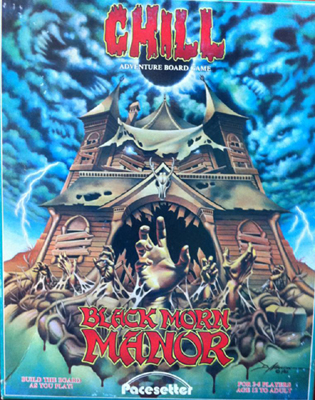
Wizards of the Coast’s Betrayal At House On The Hill shares some ideas with Chill: Black Morn Manor in that both are driven by the room tiles, and the creature is unknown until certain conditions are met, Usually in Betrayal, one of the players becomes the monster(or its servant) and a grand donnybrook ensues. Also like C:BMM, Betrayal has strong replay value because of the strategic approach blended with numerous random game elements.
Arkham Horror, first published as a Candyland-like boardgame by Chaosium in the 1980s, and more recently revived and revised heavily by boardgame powerhouse Fantasy Flight Games, quickly became a fan-favorite in both of its iterations. The basic premise is that gates to other places are opening in the quaint New England village of Arkham, and the players must close and seal them before too many monsters show up to eat people. Many elements of the original survived in Fantasy Flight’s revival and fans of the genre tend to like both, though FFG’s version is a more involved and more time-consuming game. Good luck finding a copy of the original version…
The zombie craze hit boardgames long before popular culture was even aware of the looming apocalypse. US Playing Card Company tried to diversify by adding a board/card game line, launching Zombies!!!, which for some reason didn’t achieve the popularity USPC had hoped for, apparently. Acquired by start-up company Twilight Creations (run by Todd and Kerry Britenstein, two of the game’s designers), Zombies!!! has an unlife of its own, including nearly a dozen expansions and several spin-off titles.

The Newcomer to the zombie board game scene has been Flying Frog Productions with their instant classic Last Night On Earth. Players choose characters and the scenario, and one or more of them runs the zombies. The scenarios’ goals vary quite a bit, giving it really strong replay value.
Also from Flying Frog Productions is A Touch Of Evil. Billed as a Gothic Horror board game, it’s easy to sum up; you’re playing Ichabod Crane from the Tim Burton film adaptation of The Legend of Sleepy Hollow. You’re trying to discover what the monster is and where it’s hiding. The villagers might help you; they might also be secretly controlled by the monster, and could stab you in the back when you’re not looking — another game with strong replay value.
This list is far from complete, and while it offers some great suggestions, I highly recommend stopping by your favorite local game store and checking out a few of these titles for yourself. Horror-themed gaming is as varied a beast as you can get – just like the Horror genre itself – and there are many possibilities to explore. With hallowe’en fast approaching, a night of horror board games seems like just the ticket to run those chills down your spine. Be sure to leave a light on…


